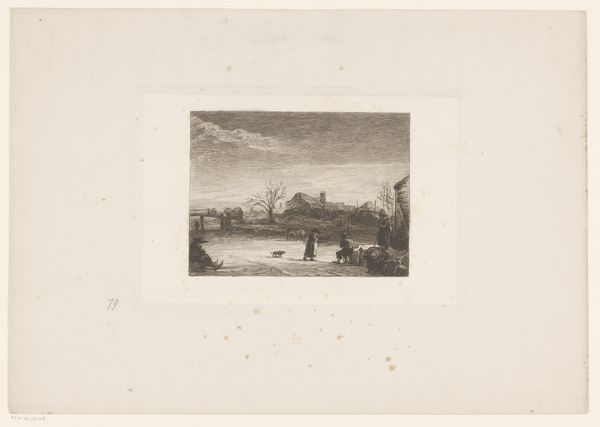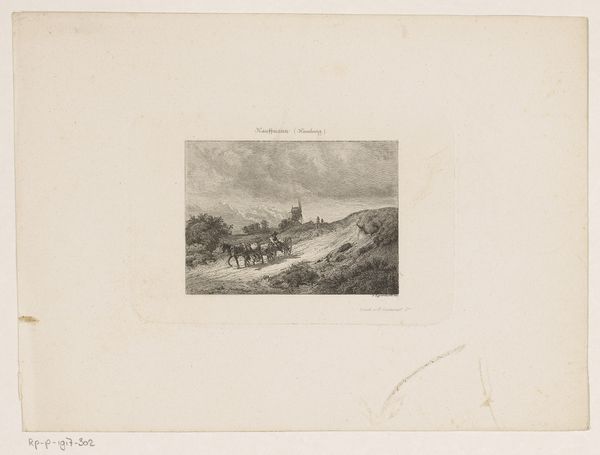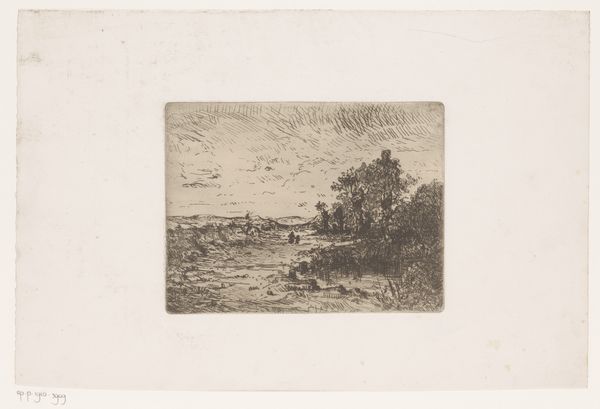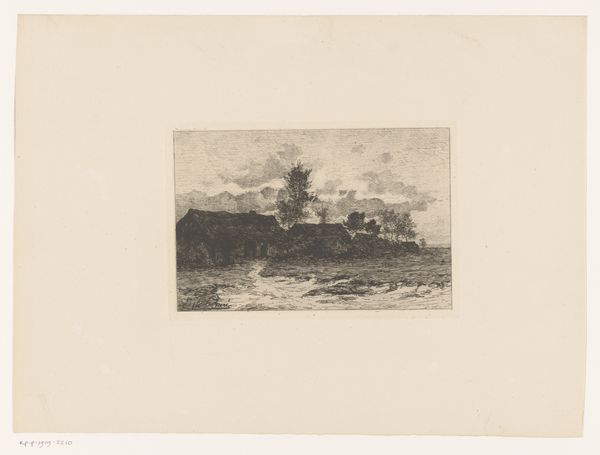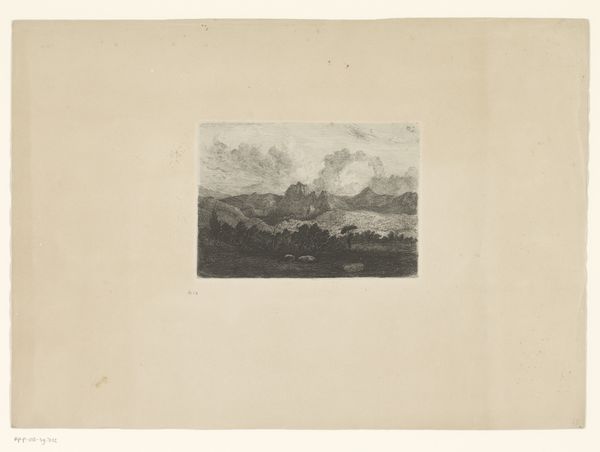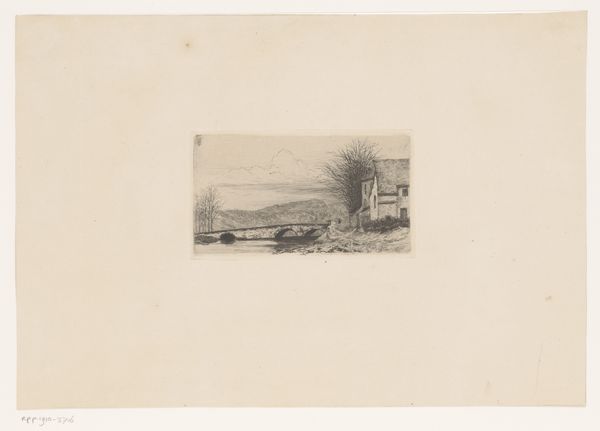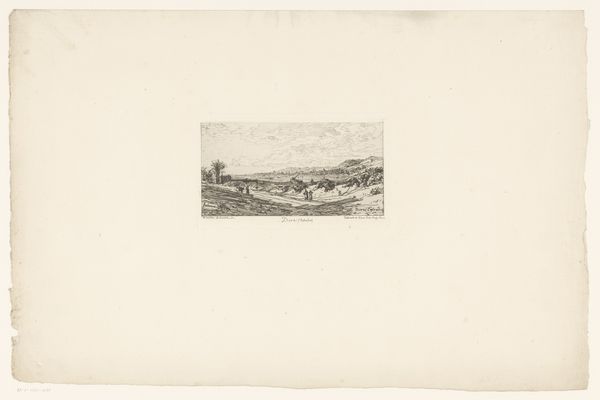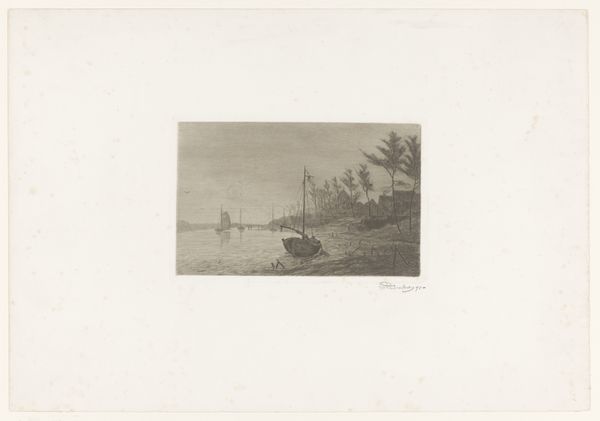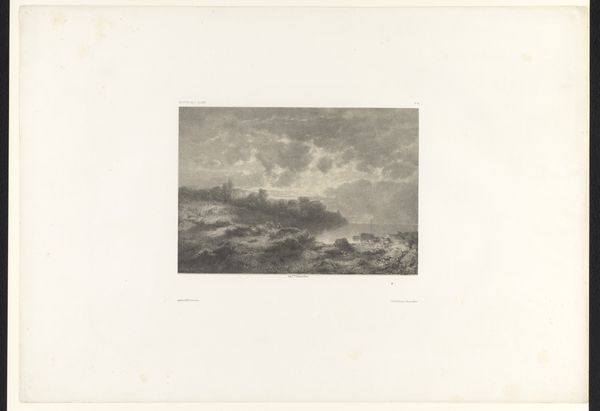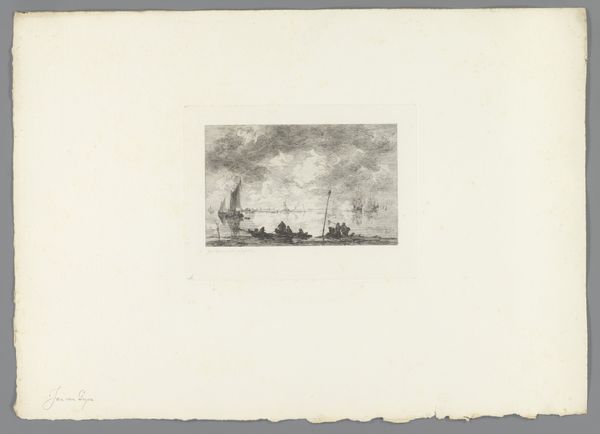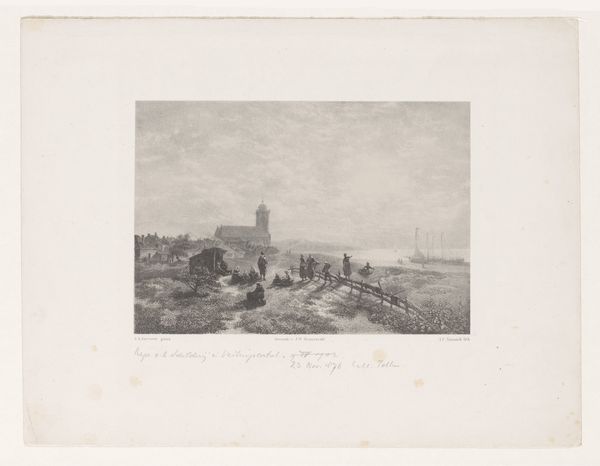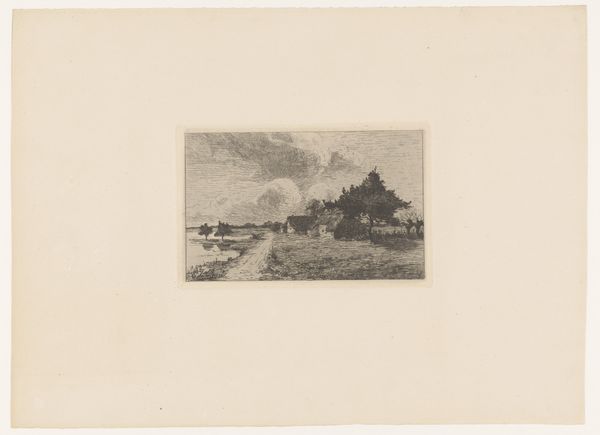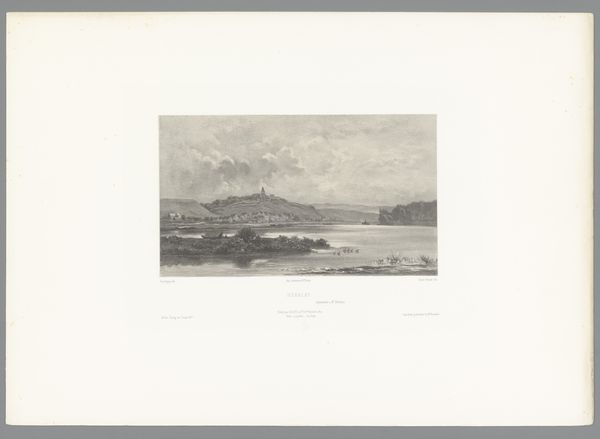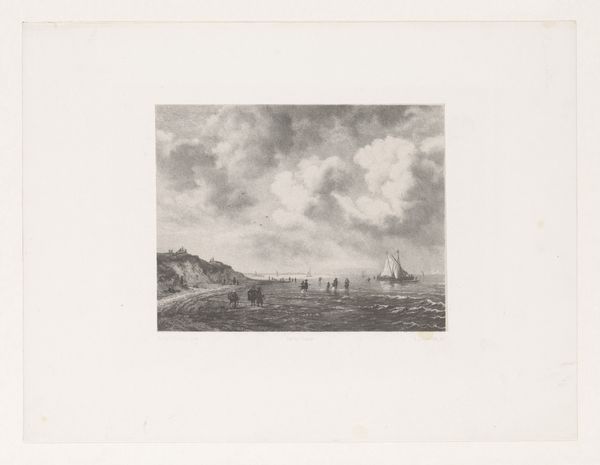
print, etching
# print
#
etching
#
landscape
#
sea
Dimensions: height 151 mm, width 197 mm
Copyright: Rijks Museum: Open Domain
Curator: Here we have "Strandgezicht bij eb," or "Beach View at Low Tide," an etching made by Amédée Paul Greux sometime between 1863 and 1880. Editor: My first impression is somber; the low, gray sky and muted tones really capture a sense of the Dutch coast's unforgiving atmosphere. Curator: Absolutely. It's interesting to note that this image was made using etching, a printmaking process involving acid to corrode the uncovered parts of a metal plate. Greux would have painstakingly layered these lines to create this composition, demonstrating incredible control over his materials. We also should note that Greux did many prints for magazines of the time, like L’Art, so we might see this piece in relation to art and distribution systems. Editor: It makes me wonder about the people in the foreground, though; they look like a tightly-knit community, maybe dependent on the sea for their livelihoods. I consider how coastal communities historically grapple with economic hardships and displacement; they’ve historically borne the brunt of shifting economic tides. The boat, run aground, can then signify vulnerability. Curator: A grounded boat indeed speaks to the inherent risk embedded in sea labor. Consider that Greux created this during a period of immense technological change in shipbuilding. So this particular craft speaks of work, possibly precarious work during rapid shifts in production. Editor: The muted tones emphasize labor, yes, but perhaps the muted pallette of gray and blacks in some ways echoes the labor of that work in the people’s daily life. Curator: Very true; by analyzing the visual construction alongside the tools of production, a wider view comes into play of what's happening here with craftmanship. It's interesting how looking at art this way opens our perspective, right? Editor: Exactly. We can remember to look not only for aesthetic beauty but for evidence of the messy complexities that always underlie them. The personal and the political become inevitably intertwined.
Comments
No comments
Be the first to comment and join the conversation on the ultimate creative platform.
